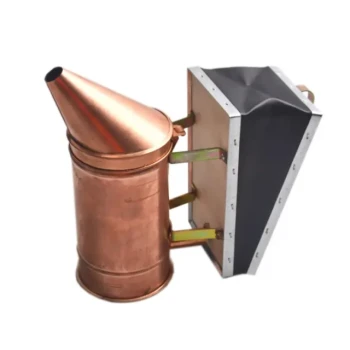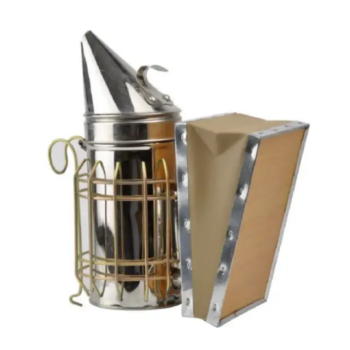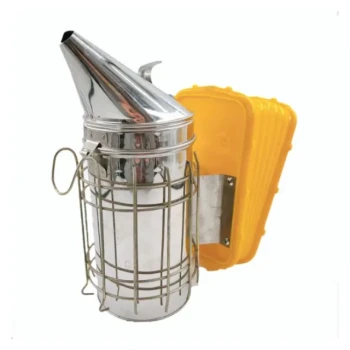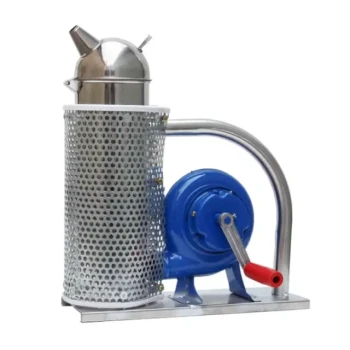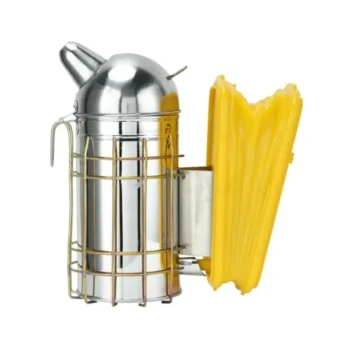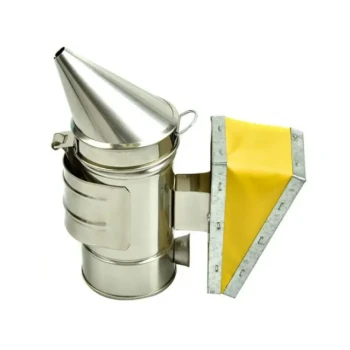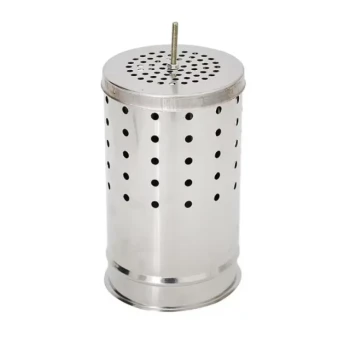To be precise, the smoke used by beekeepers is not a specific chemical but is generated by burning a variety of clean, natural, and non-toxic materials. The goal is to produce a cool, thick smoke that calms the honey bees without harming them, making hive inspections safer for both the keeper and the colony.
The critical insight is that smoker fuel is chosen for what it lacks: toxins, irritants, and excessive heat. The smoke's function is to gently interrupt the bees' chemical communication, not to sedate or harm them, making the choice of fuel essential for the well-being of the hive.

The Principle Behind the Practice
Beekeepers use smoke to trigger specific, non-harmful behavioral responses in honey bees. It is a communication tool, not a blunt instrument.
Masking the Alarm Signal
When a hive perceives a threat, guard bees release an alarm pheromone. This chemical signal quickly alerts the rest of the colony to become defensive and attack the intruder.
Smoke effectively masks these pheromones, preventing the alarm from spreading throughout the hive. This keeps the colony in a calmer, more manageable state during an inspection.
Triggering a Survival Instinct
The presence of smoke also triggers a secondary response related to the threat of fire. The bees begin to gorge on honey in preparation for potentially abandoning the hive.
A bee with a full stomach is physically less able to flex its abdomen to sting. This makes the bees significantly more docile and less inclined to be aggressive.
Choosing the Right Smoker Fuel
The effectiveness and safety of smoking a hive are entirely dependent on the fuel source. The rule is simple: if it's not natural and clean, do not use it.
Safe and Effective Materials
Beekeepers prioritize fuels that produce a consistent, cool, and clean-burning smoke.
Commonly used materials include dry pine needles, untreated burlap, wood pellets, twigs, and plain cardboard. These organic materials smolder well and do not release harmful chemicals.
Materials to Strictly Avoid
Using the wrong fuel can injure the bees or contaminate the honey. It can also irritate the bees, making them more aggressive and defeating the purpose of the smoke.
You must never use synthetic materials like plastic, treated or painted wood, or bleached paper. These can release toxic fumes that are harmful to the bees and the beekeeper.
Understanding the Trade-offs: Quality Over Quantity
Not all smoke is created equal. The quality of the smoke is far more important than the volume.
It's About Temperature, Not Just Fuel
The single most important quality of good smoke is that it must be cool. Hot smoke can burn the bees' delicate wings, injure them on contact, and will be perceived as a direct attack.
A beekeeper tests the smoke's temperature by puffing it onto the back of their hand. If it feels warm or hot, it is not ready to be used on the hive.
The Risk of Irritation
The wrong fuel or hot smoke will act as an irritant rather than a calming agent. This will agitate the colony, increase defensiveness, and make a hive inspection significantly more difficult and dangerous.
Poor smoke quality undermines the entire reason for using a smoker and damages the trust between the beekeeper and the colony.
Making the Right Choice for Your Goal
Understanding the purpose of smoke allows you to use it effectively and ethically. Your goal dictates your approach.
- If your primary focus is bee safety: Always use cool, clean smoke generated from purely natural, untreated materials.
- If your primary focus is effective hive management: Use smoke sparingly to interrupt alarm signals at the start of an inspection, not to continuously overwhelm the colony.
Ultimately, using smoke is about working in partnership with the bees, using their own natural instincts to ensure a calm and productive interaction.
Summary Table:
| Aspect | Key Information |
|---|---|
| Purpose of Smoke | Masks alarm pheromones, triggers survival instinct (gorging on honey). |
| Ideal Fuel Qualities | Cool, thick smoke from natural, untreated materials. |
| Safe Fuels | Dry pine needles, untreated burlap, wood pellets, twigs, cardboard. |
| Fuels to Avoid | Plastic, treated/painted wood, bleached paper (release toxins). |
| Critical Factor | Smoke must be cool to the touch to avoid harming bees. |
Ensure the health of your hives and the success of your inspections with the right equipment.
At HONESTBEE, we supply commercial apiaries and beekeeping equipment distributors with high-quality, reliable beekeeping supplies. Using the correct tools, like a well-designed smoker and safe fuel, is fundamental to effective and ethical hive management.
Let us help you build a more productive and sustainable operation. Contact our team today to discuss your wholesale supply needs.
Visual Guide
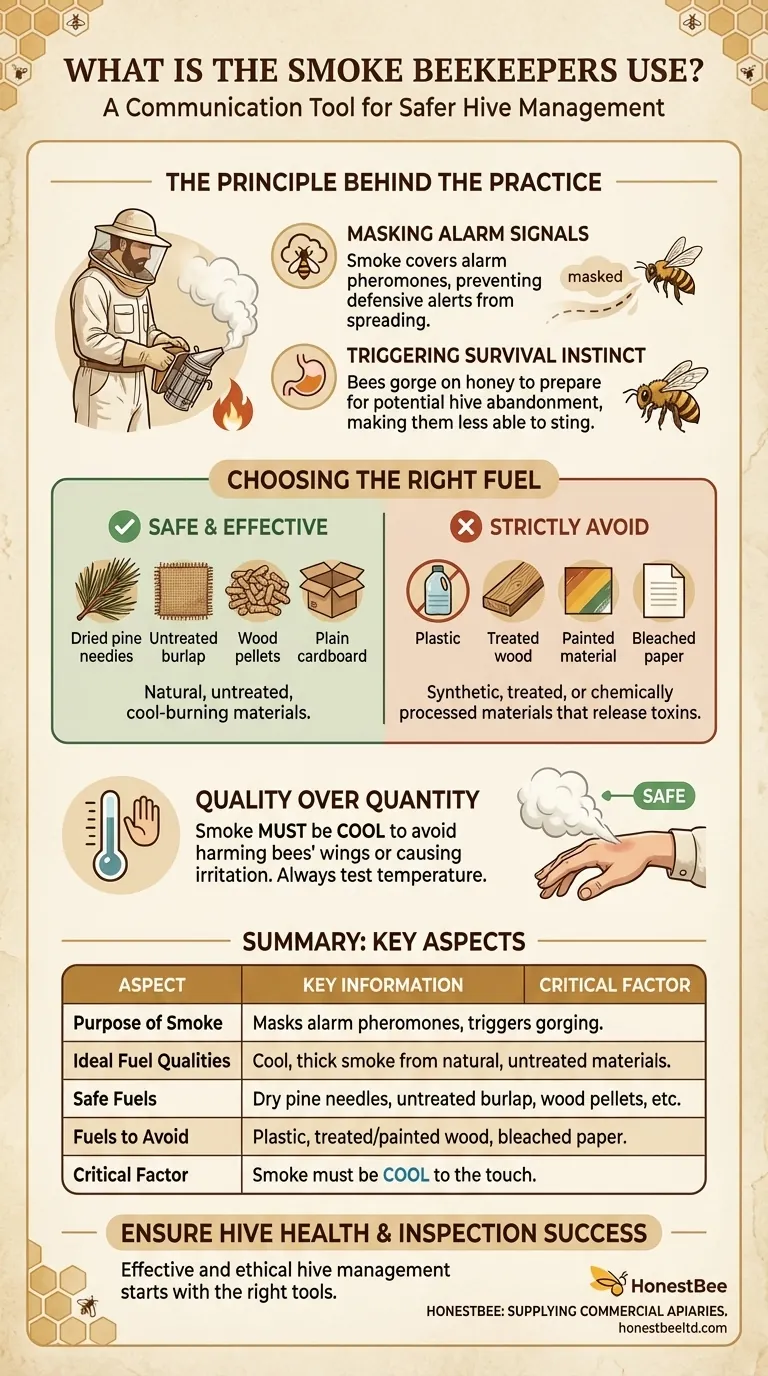
Related Products
- Economy Galvanized Beekeeping Honey Bee Smoker for Wholesale
- Premium Traditional Copper Bee Smoker with Bellows
- Stainless Steel Honey Bee Smoker Hive and Honeycomb Smoker for Beekeeping
- Professional Bee Smoker with Elongated Spout and Durable Bellows for Beekeeping
- European Stainless Steel Bee Smoker for Honey Bee Hive
People Also Ask
- How did early beekeepers use bee smokers? Master Ancient Bee Calming Techniques
- What are the common design features of a bee smoker? Choose the Right Smoker for Your Apiary
- What is a Smoker and how is it used in beekeeping? The Essential Tool for Calm, Safe Hive Inspections
- What is a bee smoker and what is its primary purpose? Master Safe Hive Inspections
- What is the purpose of a bee smoker in beekeeping? Ensure Calm, Safe Hive Inspections

